So I recently came back to Stellaris after not having played since before 2.0 and was pretty shocked by the amount of changes. It took me a bit to figure things out especially as so many of the guides that I came across were really based on pre-2.0 including the main wiki guide which is probably what most players initially stumble across.
While that guide still does cover some useful things and has had some updates, it and the in-game tutorial are pretty woefully inadequate especially in terms of explaining why/when not just what you can do. After you get a feel for the UI and understand the basic things you can do, most players will ask themselves when/why should I then do various things?
So I decided to put some thoughts down in hopes that it will help other new players or players returning from not playing for a while. I’m not an expert by any means and have only played a few games of 2.2. I’ll assume players have already gone through the wiki guide and in-game tutorial so understand the basics of what they can do but are looking for the next steps on why/when they should do various things to become better at the game and easily handle even higher AI difficulty levels. The guide will mostly focus on the early game as once you have a strong grasp on how to play well early then its fairly easy to extend that into the mid/late game and your own play style and goals. Maybe I’ll eventually look to do an AAR but here we go…
Overview
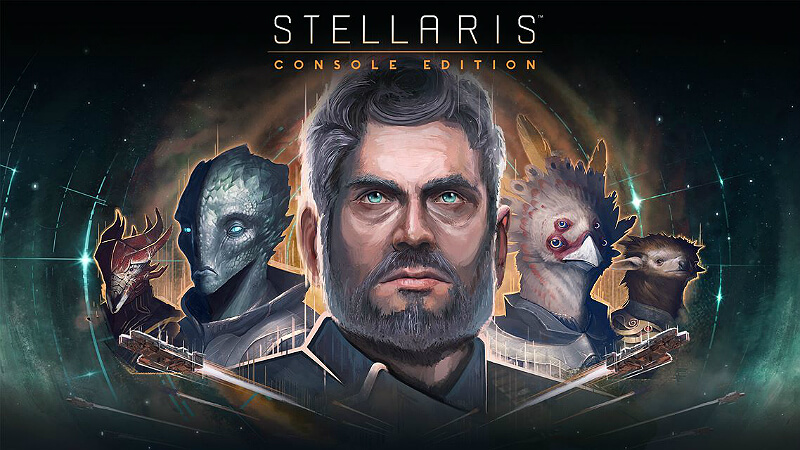
This guide will primarily focus on explaining the when/why for standard empires like United Nations of Earth and ignore more unique ones like Hive, Machine, MegaCorp, etc. It will also focus on default/standard settings and just primarily cover the early game to get players going in the right direction.
So Stellaris 2.2 mostly boils down to 2 things: total pop growth and influence.
Total pop growth (sum of pop growth across all your planets) is essentially the main indicator and limitation of how fast your economy is growing. This is because almost all of your non-basic resources (consumer goods, alloys, unity, research) are produced by jobs from buildings on your planets and you get a building slot for every 5 pops you have on a planet. So if I have 10 planets each with 20 pop then I have 40 buildings slots (10 x 4) where I can be producing non-basic resources. The higher my total pop growth, the faster I’m gaining new building slots to expand my economy and produce more non-basic resources. Most actions you take in a game should be to eventually get more total pop growth whether that is by attaining pop growth bonuses or expanding to new planets.
Influence is primarily used to build new outposts to expand to more systems. There are a fairly limited number of ways to increase your monthly influence gain so its mostly about ensuring your prioritize those and use the influence you get wisely. The influence cost of each outpost is based on how many hops it is away from your closest owned system so you generally want to try to build outposts adjacent to already owned systems.
Resources

Resources are divided into 2 categories: basic and non-basic. The basic resources are produced primarily by stations and district jobs and are mostly used to handle upkeep as well as being consumed to produce non-basic resources. You need a solid foundation of basic resource generation but they alone can’t achieve many of our goals. Non-basic resources are resources that are primarily produced by building jobs on planets. Influence is somewhat unique as you don’t produce it and have limited ways to increase its monthly generation. Alloys, unity, and research are the main resources that we want to maximize our production of as these directly correspond to building ships, gaining traditions, and research new technologies which generally are how we become the strongest empire and win the game. The following gives a brief overview of each type of resource.
Basic Resources
- Energy – produced by stations, generator districts, and trade; used for ships/buildings/districts/starbases/stations/leaders upkeep and recruiting leaders
- Minerals – produced by stations and mining districts; used to build stations, districts, and buildings as well as consumed by civilian factories and alloy foundries
- Food – produced by agriculture districts; used for pop upkeep
Non-Basic Resources
- Consumer goods – produced by civilian factories; used for pop upkeep consumed by research and unity generation buildings
- Alloys – produced by alloy foundries; used to build ships and upgrade starbases
- Unity – produced by base planet buildings and autochthon monuments; used to gain new traditions
- Research – produced by research labs and stations; used to research new technologies
- Influence – base monthly gain is 3, factions/rivalries are the main way to increase it; used to build outposts, make claims, and many diplomatic actions
Exploration and Expansion

So early game is really focused on exploration and expansion. We want to own as many systems as possible, colonize as many planets as possible, and maximize our total pop growth in order to create a strong economy that we can then wield as we please into the mid/late game. Many players worry about the empire sprawl penalty but this is actually very low and should for the most part just be ignored.
Exploration is achieved by science ships and we should look to build at least a handful of these. They can explore new systems, survey systems to determine resource deposits and planets, and research anomalies for some nice bonuses. Our main focus should be on finding habitable planets and resource rich systems to build outposts on and expand to. As you find anomalies, you’ll want to consider what level they are and how long they would take your scientist to research (probably don’t want that lvl 1 scientist to spend a few years researching a lvl 10 anomaly). I generally find that if I have a scientist that is at the same level or even 1 level below the anomaly’s level then its fine to research it otherwise the time it takes to research is too long in the early game and its better to come back to it later on after my scientists have gained a few levels from surveying and researching low-level anomalies.
Expansion is done through construction ships to build outposts and stations on systems and colony ships to colonize planets. The more stations we build, the more resources we are generating. The more planets we colonize, the more total pop growth and buildings/jobs we have. We also want to try to quickly grow colonies to 10 pop so that we can upgrade the base planet building to a planet administration to remove the -50% pop growth and get some nice bonuses. To do this we will often look to use resettlement to move pops to our new colonies to accelerate this process. For each planet, we want to ensure we have a few more jobs then we have pop through building/districts but we want to avoid buildings lots of extra districts to create jobs that we don’t have the pop to actually work as its just wasting resources.
So is there anything besides resources that limits expansion? There are 2 mechanisms in the game that can give penalties based on expansion: administrative capacity and cohesion. Administrative capacity is a measure of the number of districts/systems/planets that you own and you get a very small penalty for each point you are over your cap. The penalty is so small that its almost always better to just ignore this and expand as much as possible. Cohesion is a measure of how compact/continuous your empire is. Cohesion is increased by number of owned systems and upgraded starbases while it’s decreased by the number of hyperlane connections leading out of your borders and any isolated systems (unowned systems which only have connections to your empire). If your cohesion drops below 100% then you get a multiplier penalty to your administrative points proportional to how far below 100% you are. In most cases, cohesion naturally stays at 100% as you expand and even if you dip down to 80-90% it isn’t a big deal early in the game. You just want to avoid snaking your empire too much to a point where you have <50% cohesion as that will really hurt your administrative capacity and amplify the penalty you get. So if you snake out to grab an important system then keep an eye on your cohesion and make sure to fill in areas if it starts to dip too low.
Market
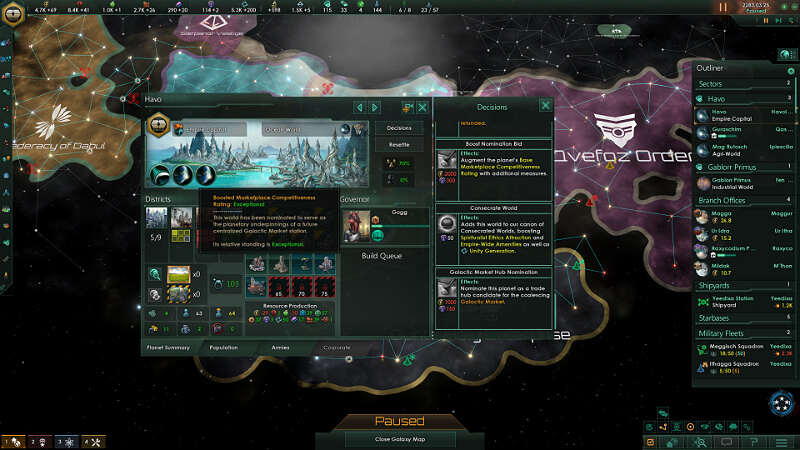
The market is your friend. Don’t be afraid to sell/buy resources. The base rate of 70% for your internal market is pretty good and stable. Often you’ll find yourself with extra of something and not enough of something else so use it to balance things out. Often it’s fine to run a monthly deficit of a resource especially energy as there are limited ways to produce it and generator districts are much less efficient than agriculture districts (produce 4 vs 6). You can use the market to cover these deficits by either manually buying/selling resources when you are getting very low on a resource or setup a monthly trade to cover the deficit. The key here is to pay attention as the penalties for running out of a resource are pretty severe so you want to make sure you use the market to address the situation quickly to avoid tanking your economy.
You generally want to avoid having large stockpiles of resources as you should be putting these to good use instead. The one exception is that you do want to have a small stockpile of alloys so that you can quickly expand your fleet and upgrade starbases if needed.
Technology
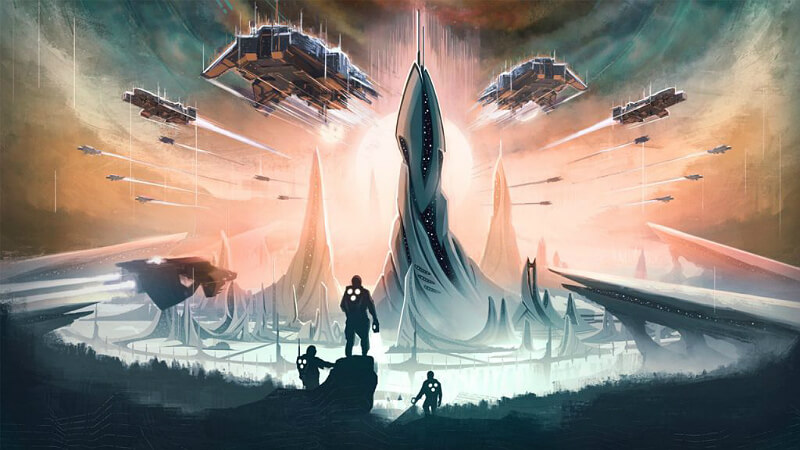
- So there are 3 different areas of research (engineering, physics, society) that you look to progress in parallel. You always want to ensure you have a scientist assigned to each area and a technology selected.
- For each area, you are given a choice of 3 different technologies (there are some ways to increase the number of options you are given)
- Deciding on which technology can be difficult especially for new players as the options you are given are randomized from the available techs so its different each game. You mostly want to read each tech and decide if it would immediately improve your empire in some way. Early game you mostly want to focus on anything to improves economy/exploration/expansion and then as you meet AI empires begin focusing on some of the fleet techs.
Policies
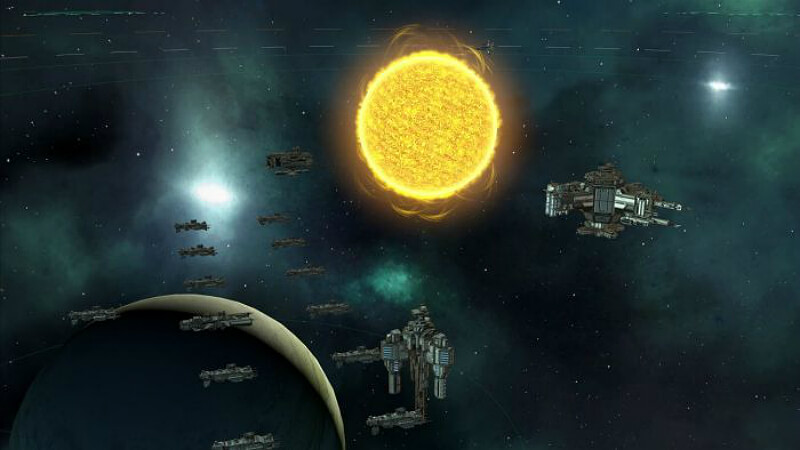
- Most of the starting policies are good and shouldn’t be altered unless you have a strong grasp on what they impact
- Changing any policy means you can’t change it again for 10 years
- The most common one that you’ll almost always want to change is to set Resettlement to Allowed so that you can move pops from planet to planet for a base cost of 100 energy per pop. This allows you to focus/accelerate grow of 1 colony at a time in order to get it to 10 pops and be able to upgrade its base planet building to planet administration.
- Food policy can be changed to Nutritional Plenitude to increase pop growth and happiness but this will cost extra food upkeep so ensure you have enough food monthly surplus
- Trade policy can be set to any of the 3 options depending on what resources you feel you need the most. I tend to prefer Marketplace of Ideas as there aren’t a lot of ways to increase your unity production and getting traditions faster can really help but this means you be getting less energy from trade so ensure you can handle an energy deficit if you change it.
- The rest of the policies you probably won’t change early game until at least factions are spawned (~10 years into the game). At that point, you’ll want to review your factions to see if any of their demands can be met by changing your policies. As ensuring your factions are happy, makes them generate more influence.
Edicts
- Generally, you don’t want to spend influence on edicts early game and don’t have strategic resources for the rest
- Eventually you may unlock additional edicts/campaigns through research or events that you might want to consider activating
- Probably the most common one you’ll use is once you unlock campaigns through researching the appropriate technology, you’ll want to activate Healthcare Campaign for increased pop growth
Traditions
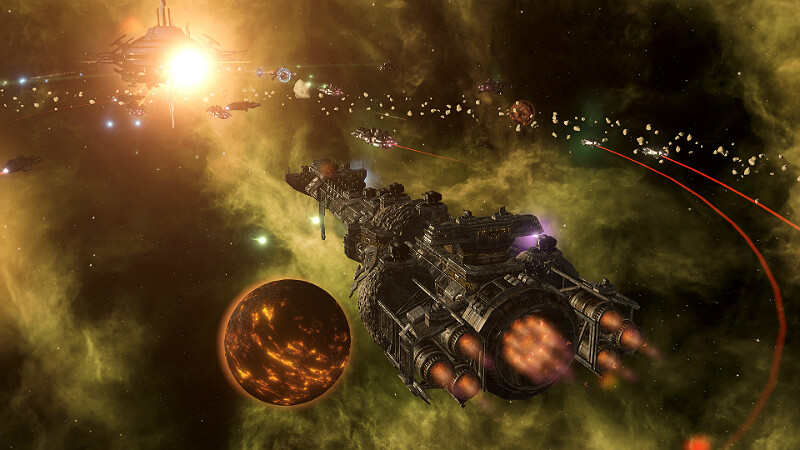
- Expansion tends to be the best and most straightforward option to start with
- It provides a lot of nice bonuses to colonization, starbases, pop growth, and admin capacity which cover a lot of the early game focus
- Here’s a standard policy order: open Expansion, Reach for the Stars, Colonization Fever, A New Life, Courier Network, Galactic Ambition
- First Ascension Perk: Interstellar Dominion
- After Expansion, there are a lot of good options and starts to depend on your goals and play style into the mid-game
Trade
So eventually you’ll have multiple planets and trade routes will be formed from them to your capital. You can also upgrade Starbases and build trade hub modules in order to collect trade value deposits that appear in systems. Trade value is converted to energy 1 to 1 unless you change the trade policy then half of it can be converted to consumer goods or unity. Any trade route that has more than a value of 2 can eventually have piracy which will reduce its value. During the early game, the best way to avoid this is use a few corvettes to patrol the trade routes. You can also upgrade starbases and add trade protection modules to cover the trade route and prevent piracy but its often better to focus starbases on other things and you have a fairly limited number early game. Don’t worry too much about trade in the early game as it tends to be a very small amount of your overall energy production. You also want to generally avoid working clerk jobs unless you need amenities as they are not very efficient compared to other district jobs.
Upgrading Starbases
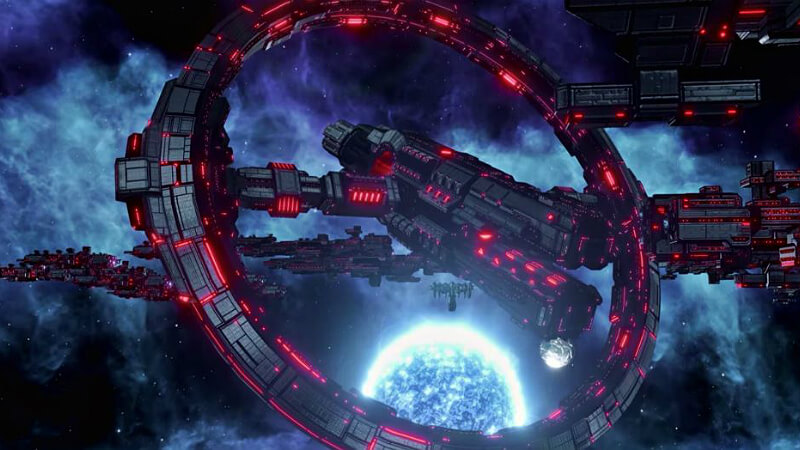
Once you find a cluster of trade value deposits on systems or find some of the AI controlled empires, you’ll want to consider upgrading some of your starbases (outposts) to starports. Upgrading starbases and adding modules/buildings cost alloys and takes a good amount of time to complete. Here are probably the 3 most common early game scenarios for upgrading a starbase:
- Trade – You find a cluster of systems that have trade value deposits. You can upgrade your starbase and build trade hubs to collect these deposits on the system that the upgraded starbase is in as well as systems 1 hop away for each trade hub module you add (so maximum of 2 hops away for 2 trade hub modules on a starport). These will be collected by the starport and a trade route formed back to you capital. You can view this in the trade map mode and eventually piracy will most likely start to rise and you’ll want to assign corvettes to patrol the route.
- Chokepoints – You find some of the neighboring AI empires and want to create a defensive point in case they look to declare war on you. You can look to upgrade the starbase at these chokepoints to improve their defensive capabilities as well as add shipyards to build ships there, defensive buildings, and defense platforms.
- Naval Capacity – Once you start building out your fleet, you’ll often get to the naval capacity limit. One way to increase that limit is to upgrade a starbase and add anchorage modules (+4 naval capacity per anchorage). This will allow you to continue to build out your fleet without occurring penalties of increased upkeep for going over the limit.
Building Fleets
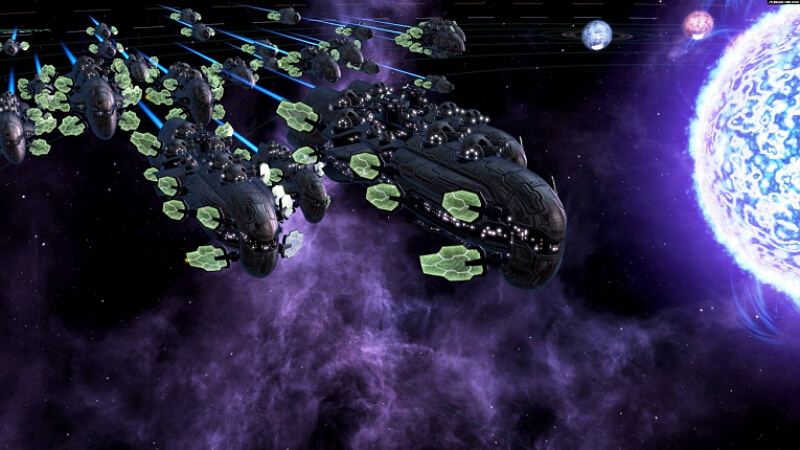
Once you find AI empires or some aliens that you want to clear, you’ll need to build out your fleet past those 3 corvettes that you start with. Keeping an eye on the contacts view will give you a sense of your relative power to other empires and usually AI empires won’t declare war on you unless they have higher relative power. One of the elements of relative power is fleet strength and is the easiest one to increase.
Early game you don’t have many options to choose from in the ship designer as you probably only have corvettes and a few weapon choices. It’s best to usually create your own ship design so that you understand what options you currently have and what types of ships you are bringing to battle. Probably the most important thing to understand early on is there are different types of weapon slots and each type of weapon has different multipliers against shields, armor, and hull.
So to start, select creating a new corvette design and select the interceptor section (3 small slots). This tends to be the most balanced section choice as the other 2 options are missle boat (1 small, 1 guided slots) and picket ship (2 small, 1 point defense slots). Missle boat tends to be better against larger ship types and if the enemy doesn’t have much point defense. Picket ship tends to be used to counter fleets that are using lots of guided weapons. In 2.2, I’ve generally found that balanced ship design in terms of weapon type and shield/armor is best as upgrading existing ships is pretty expensive so trying to quickly switch existing fleets to different weapons or defenses is costly. So look to add in a mix of energy weapons (anti-armor) and kinetic weapons (anti-shield) as well as a mix of shields and armor so that you fair well against just about any type of enemy ship. If you’ve seen what the enemy has then you can look to create a design that particularly counters what they have (they have all kinetic weapons so I could focus on armor) but be careful as upgrading ships is fairly expensive so if you end up having to fight against something you didn’t plan for and built a very specialized fleet you could be in trouble.
Once you settle on a corvette design, save it and look to start building some from any of your starbases that have shipyards. Unless you are looking to go to war, you generally want to just use your fleet as a deterrent for the AI declaring war on you. You also want to try to avoid going over the naval capacity as going above that increases the upkeep costs of all your ships and can quickly drag down your economy. The fleet strength number shown on the map, is generally a good estimate of how strong a fleet is and comparing that to your enemy is a good way to get a feel for if you would win a battle.
Example Build Order for a New Game
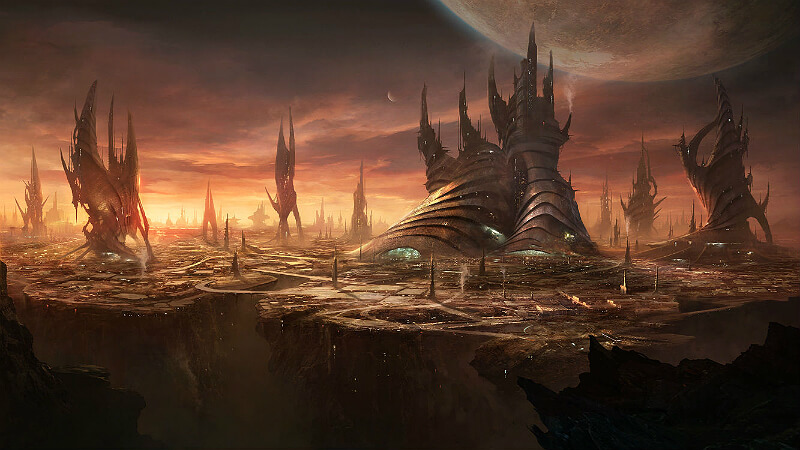
Setup
- Start as United Nations of Earth as this is a very straightforward empire with solid bonuses all around
- All default settings except whatever difficulty level you are comfortable with
Starting Moves
- Policies: Set Resettlement to Allowed
- Technology: Select research in each area and going with +20% from Researchers is a safe choice
- Construction Ship: Build Mining Station on home system +3 energy deposit
- Science Ship: Survey an adjacent system
- Shipyard: Build Science Ship
- Once Science Ship is complete then recruit/assign Scientist (if you need more Energy then use Market to sell Food and/or Consumer Goods)
- Science Ship #2: Survey adjacent system in different direction than Science Ship #1
Home Planet Build Order (as you have the resources and don’t be afraid to use market to buy/sell)
- Build Alloy Foundries – Alloys and Minerals tend to be the most important resources early game in order to build Outposts, Stations, and Colony Ships. They eventually are also needed to build Corvettes and Starports.
- Build Agriculture District – Try to minimize working Clerk jobs and Agriculture Districts are the most efficient since they produce 6 vs 4 for Generator and Mining Districts. There also tends to be a lot more Mineral than Energy deposits to put Stations on.
- Clear Sprawling Slums Blocker – Gives a free pop on clearing.
- Activate Encourage Planetary Growth Decision once you have lots of extra Food
- Usually it’s best to avoid building anything else as you’ll resettle pops over 20 to your first colony
Science Ship Surveying
- Review if there are any habitable planets (60%+) and what resource deposits systems have
- Once you find a habitable planet, save necessary resources for Colony Ship (200 Food, 200 Alloys, 200 Consumer Goods)
- If a system has lots of resource deposits then use your Construction Ship to build an Outpost and then construct Stations (try to ignore +2/3 research and +2 mineral deposits)
- Keep surveying nearby systems to find more habitable planets and resource rich systems
Build First Colony
- Once you’ve found a habitable planet, build a Colony Ship
- Construction Ship: Build a continuous chain of Outposts to the system with the habitable planet
- Construction Ship: Build stations on the best resource deposits in the Outposts
- Once Colony Ship is constructed, colonize the habitable planet
Build Second Colony
- Once you’ve found a second habitable planet, build another Colony Ship and colonize it
- Generally, your home planet can support growing 2 colonies and default settings usually have 2 habitable planets spawn near you
Explore and Build Outposts
- When you have enough Energy and Alloys then build additional Science Ships and recruit Scientists to speed up exploration. Usually you want to have 4-6 Science Ships.
- Look to build Outposts and Stations in the systems with the most resources
- If you have extra influence/minerals then build another Construction Ship to speed up building Outposts
First Colony Complete
- Build 2 districts: Agriculture if you need Food/Energy, Mining if you need Minerals
- Resettle 3 pop to fill new districts and then build Autochthon Monument to produce more unity to gain traditions faster
- Build 1 district: Agriculture if you need Food/Energy, Mining if you need Minerals
- Resettle/grow till you have 10 pop and upgrade to Planetary Administration
- If you’ve found another habitable planet then look to build a third colony
- Build a Civilian Industries as your monthly consumer good production is probably getting low
Second Colony Complete
- Once you’ve completed all your buildings on your first colony then do the same here but it’ll be slower as you don’t have lots of extra pops on your home world to resettle
- You can also choose different buildings if you feel that your unity and consumer goods production is solid then you can consider research labs or alloy foundries
- For each planet with 10+ pop and has a Planetary Administration, you can support up to 2 colonies so don’t be afraid to have multiple colonies at the same time
- Early game you want 20 pop on your home planet and 10 pop on all others so resettle all others to new colonies
Now What?
So this establishes the base pattern you should work with during the early game until you run out of systems to build outposts on and planets to colonize. Eventually you’ll start finding other empires and want to start building up your fleet strength and upgrading starbases at choke points with your stockpile of alloys. From there, it’s mostly up to you. You should have a solid foundation and on any level below Admiral, be well ahead of the AI empires so have the flexibility to conquer the galaxy or build peacefully.
The following shows a few screenshots showing the progression through this build order to give you an idea of what your empire could look like and general ballpark timelines (I don’t claim to be an expert and there are many ways this could be optimized). Don’t worry too much about timing as you get more used to the game you’ll begin to be faster and you’ll be able to start weaving many of these steps together.
Building First Colony – Alpha Centauri
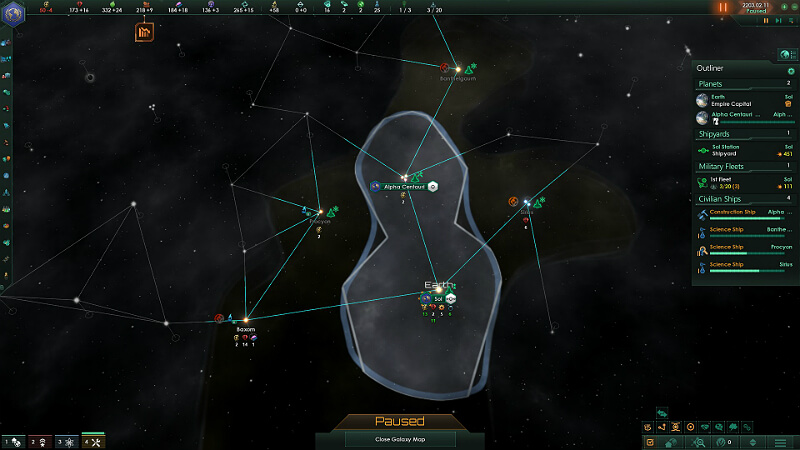
Building Second Colony – Sirius Prime
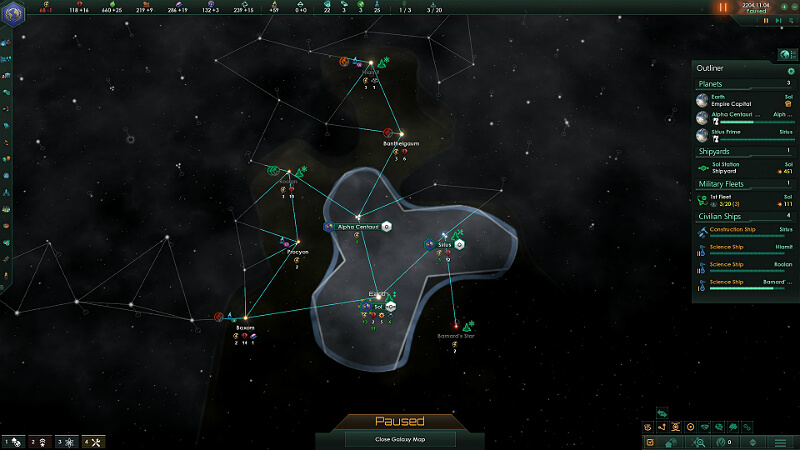
Both Colonies Complete and Starting to Resettle Pops from Earth to Alpha Centauri
- This shows that I’m running an energy deficit but have a monthly gain in all other resources. So I’ll need to keep an eye on it and sell some resources (usually food since I have a nice surplus and it doesn’t have a lot of uses) to ensure I don’t reach 0 energy.
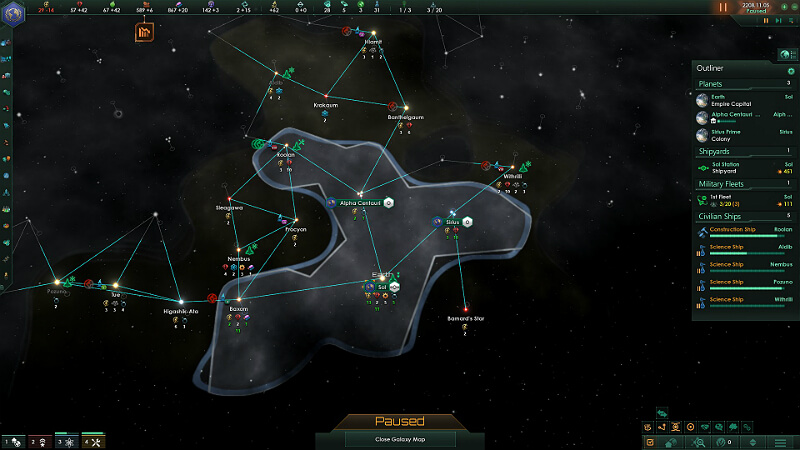
Alpha Centauri Completes Planet Administration and Third Colony Founded – Roolan Prime
- This shows an example of having <100% cohesion which has caused me to be just over the administrative cap (51 > 50). In this case, it’s not a big deal but as I continue to expand I’ll want to fill in some of the gaps such as Tiriyok which is considered an isolated system (-3) and 2 external hyperlanes (-2) for a total of -5. So building an outpost there would get rid of the -5 and give me +1 for another system for a total change of 6 for my cohesion which would put me back at 100%.
- I have a small consumer goods deficit and very low stockpile of them as I had sold a bunch earlier on the market. Due to that, I decided to build a civilian factory as my second building on Alpha Centauri. Generally, consumer good pop upkeep will steadily increase as you gain more and more pops so unless you want to buy them on the market you’ll need to build new civilian factories every so often. This will get it back so that energy is the only resource I’m running a deficit of which I’m generally covering by selling my healthy food surplus (+66 food x 70% = +46.2 which easily covers -32 energy). If I did need to stockpile food for a colony ship or encourage planetary growth decision then I could sell my mineral or alloy surplus instead.
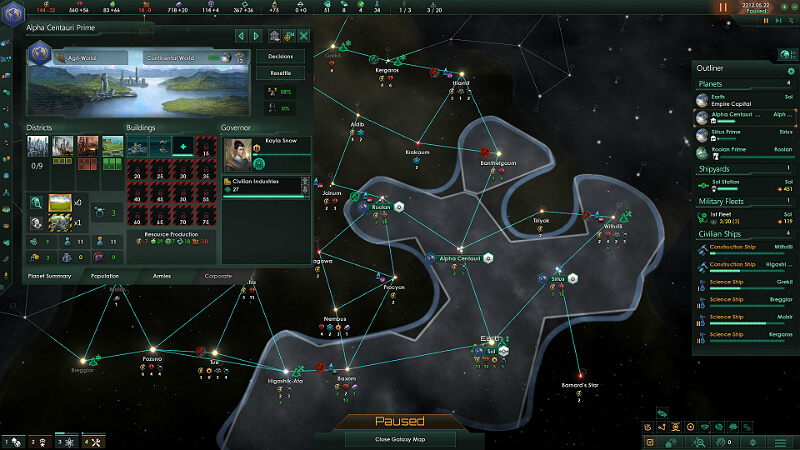
Original Link – Continuation of discussion


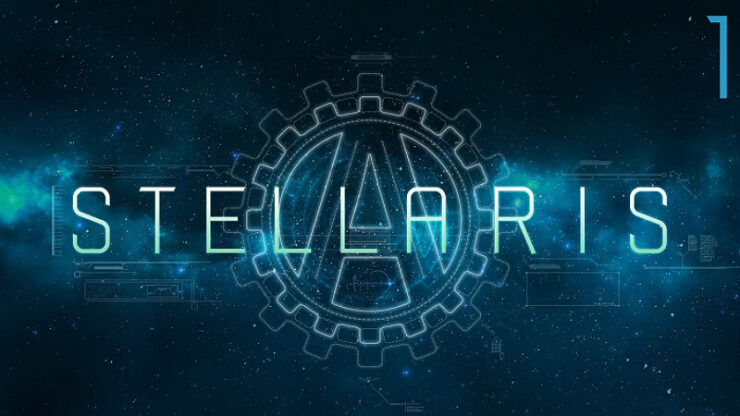



Add comment